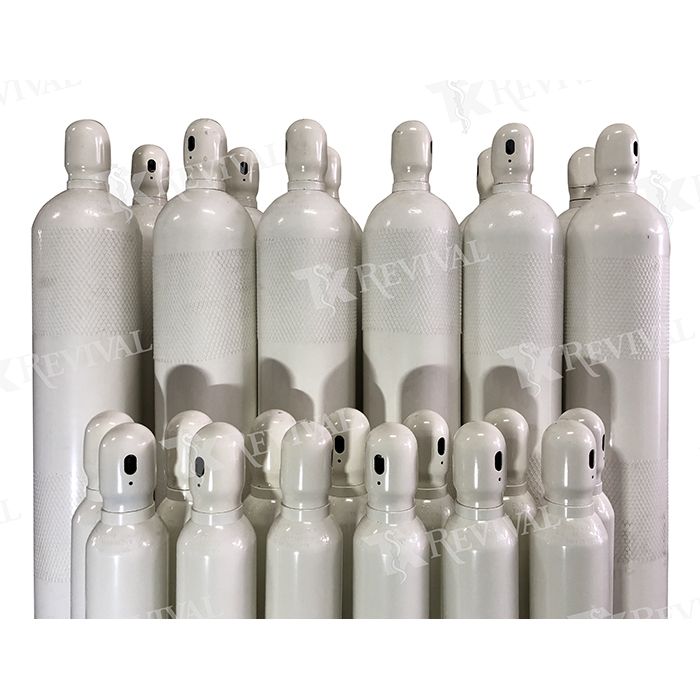The LARGE TANK is the common packaging size of medical gas and is suitable for large consumptions or increased stocks. It is about metal cylindrical containers within which gas is stored under high pressure.

The LARGE TANK is the common packaging size of medical gas and is suitable for large consumption or increased stocks. It is about metal cylindrical containers within which gas is stored under high pressure. Their distinction is made based on color and as shown in the following picture, the specific color code applies.
The most common size (for one OXYGEN TANK) is a 50 litre TANK. This volume concerns the content of the tank at atmospheric pressure which is approximately 1 bar. The maximum filling pressure of tanks is 200 bar (or 150 bar for the old-type tanks). The MEDICAL GAS tanks fill under this specific pressure. The only exceptions are nitrous oxide and carbon dioxide because these two gases are in the liquid phase within the containers. For this reason, the pressures of these gases are much smaller (about 45-55 bar, depending on the outdoor temperature) and these gases are measured in units of weight (kilograms). All the remaining gases are measured in units of volume (cubic meters) that show their content.
Based on the above, a gas tank (other than nitrous oxide and carbon dioxide), whose filling pressure is 200 bar, contains approximately 10 cubic metres because the most recent measurement techniques take account of the gas compressibility factor, i.e. a gas constant which, when multiplied by the ideal volume of 10 cubic meters, equals the final content of the tank.
The constants of the most common gases are as follows:
- OXYGEN TANK: 1, 07
- NITROGEN TANK: 0, 96
- HELIUM TANK: 0, 91
All large tanks have French-type (NF) valves in accordance with the specifications shown in the following table. The outlet couplings of the tanks vary depending on each type.






